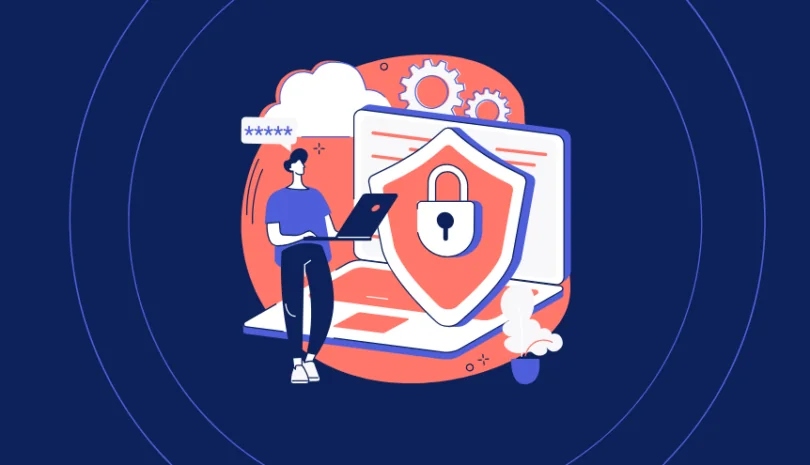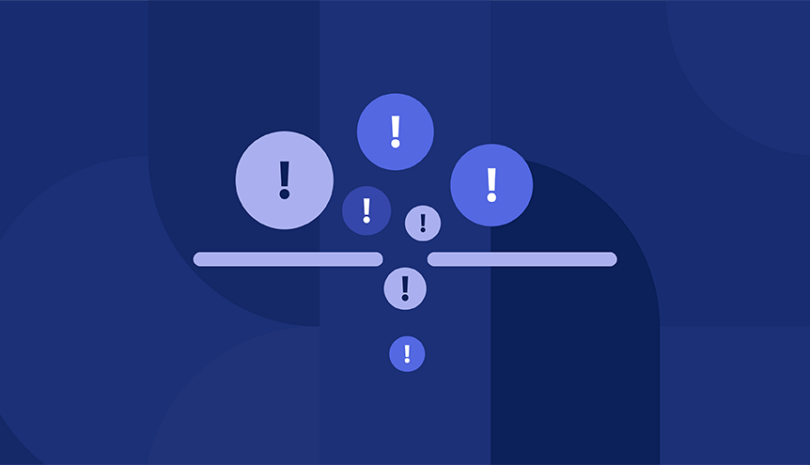Cyber attacks are probably the worst nightmare for any organization, but staying abreast of cyber risks can cause burnout for security teams. Robust cybersecurity defenses require more than just commitment and expertise; they call for effective toolkits.
Cyber risk platforms have emerged as essential weapons in this fight, but few organizations go beyond their dashboard capabilities and basic risk monitoring functions. A cyber risk platform is a sophisticated system that delivers actionable insights, valuable automation, and predictive analytics. Used to its full extent, it empowers security teams to anticipate and mitigate potential threats before they materialize.
It’s unfortunate that so many companies fail to harness the full potential of these platforms to drive proactive risk management. In this article, we’ll explore the often underutilized features of cyber risk platforms, and share best practices that enable you to boost your cybersecurity and ensure a more resilient digital environment.
The Basics of Cyber Risk Dashboards
Cyber risk dashboards are definitely valuable for cyber risk monitoring. They deliver real-time visibility into your cybersecurity posture through clear visualizations, at-a-glance overviews and granular insights. Features like risk scores, incident tracking, and vendor monitoring enable you to quickly assess your current security status and third-party risk exposure.
A good cyber risk dashboard like Panorays offers comprehensive dashboards that summarize multiple risk factors in a single, easily digestible view. With Panorays, you can take in vendor compliance status, cyber risk, and cyber posture ratings, all updated in real time, and zoom in for a granular view to gain a deeper understanding of the company’s risk exposure.
But as useful as they are, dashboards are designed to be a starting point for deeper investigations. They help you to identify potential vulnerabilities and prioritize actions based on the most pressing risks and incidents, but robust cybersecurity needs to go much further.
Why Cyber Risk Dashboards Alone Aren’t Enough
Nobody ever intended for cyber risk dashboards to carry the main burden of your organization’s cybersecurity. They are designed for a specific purpose: to provide up-to-date, easy-to-comprehend snapshots of your security posture. They don’t reveal the root causes of security issues or the intricate details of emerging threats
Dashboards are great at aggregating data and presenting it concisely, but they generally lack the depth needed to fully understand underlying risks, trends, and long-term implications of the changes they chart. If you depend solely on dashboards, you might miss out on critical insights, leaving serious gaps in your cybersecurity strategy.
Organizations that rely too heavily on cyber risk dashboards often end up neglecting other features and solutions that support deeper analysis and proactive decision-making. While dashboards deserve a place in your cybersecurity toolkit, it’s important not to overuse them.
Understanding the Role of Dashboards in Cyber Risk Management
When you implement cyber risk dashboards in the right way, you’ll build a robust cybersecurity strategy that delivers strong protection across the organization. This means understanding both the benefits of dashboards and the functionalities you’ll see when you use a cyber risk platform to the full.
A dashboard offers:
- Data integration from other security tools
- Deep dive analytics tools like root cause analysis
- AI-driven threat prediction and automated resolution
Data Integration and Contextual Analysis
One of the main ways that dashboards improve cyber risk management is by delivering a comprehensive and unified view of the organization’s risk landscape. They aggregate data from Security Information and Event Management (SIEM) systems, threat intelligence feeds, and other disparate sources into a single interface, which allows security teams to correlate and analyze data more effectively.
Dashboards also deliver contextual analysis, which examines data within your organization’s specific context to highlight the threats and vulnerabilities that are most critical for your circumstances. This helps your teams to prioritize remediation efforts for the most pressing issues.
Deep-Dive Analytics
Most cyber risk dashboards include advanced tools for root cause analysis and trend tracking. They guide security personnel towards underlying causes for incidents and patterns that might otherwise go unnoticed.
For example, root cause analysis capabilities help trace the origin of breaches, revealing which vulnerabilities were exploited so you can prevent such an incident from occurring in the future. With trend tracking tools, teams can monitor and analyze security events over time to identify recurring vulnerabilities, evolving threat patterns, and systemic issues that could inculcate deeper flaws in your security posture. Trend analysis also helps with forecasting potential threats, so you can proactively increase operational security.
Threat Prediction and AI
Additionally, cyber risk dashboards leverage AI and predictive analytics to improve both threat detection and threat mitigation. AI and machine learning (ML) algorithms can crunch vast amounts of data to forecast likely attack vectors, identify emerging threats, and assess the potential impact of various vulnerabilities.
With this advanced visibility, you can proactively anticipate cyber threats instead of constantly reacting to them. The predictive capabilities enable enhanced situational awareness and more strategic decision-making. AI-enhanced dashboards can also push actionable recommendations on how to mitigate potential risks, which helps you direct your resources more efficiently.
Automation: Streamlining Risk Management Processes
Moving on from dashboards, cyber risk platforms deliver powerful advantages that can have a significant impact on your cybersecurity posture. Above all, they automate risk management processes to streamline workflows, save time, and increase accuracy and visibility into your risk landscape.
The benefits include:
- Automating vendor risk assessments, both when onboarding vendors and on an ongoing basis;
- Automated incident response workflows that are triggered when a certain threshold is reached;
- Automated compliance monitoring that tracks vendor adherence to regulations.
Automating Vendor Risk Assessments
A good cyber risk platform can automate the work involved in gathering cybersecurity information from vendors. Instead of manually collecting data, the platform retrieves it from sources like security certifications, compliance reports, and financial data. This allows you to assess potential risks and make informed decisions about vendor relationships more quickly.
What’s more, the cyber risk platform can carry out continuous monitoring for each vendor’s risk profile. Ongoing surveillance means you can detect changes in a vendor’s risk posture in real-time and respond to them promptly, which increases your cyber resilience.
Incident Response Automation
Swift incident response is a crucial element in effective cyber risk management, and automating makes it as quick and efficient as possible. Many cyber risk platforms have automated incident response workflows which apply a set of predefined actions as soon as they detect a threat above a certain threshold, like isolated parts of the network or blocking access from certain users or devices.
This helps limit the spread of threats within the network and minimizes potential damage. Automated workflows also consistently follow best practices and regulatory requirements, ensuring that all necessary actions are taken systematically and nothing is overlooked.
Regulatory Compliance Automation
Automating regulatory compliance monitoring is vital for verifying that you meet the necessary legal and regulatory requirements. Platforms like Panorays provide advanced compliance monitoring tools that automatically map vendor risk data to regulatory frameworks such as GDPR, HIPAA, and other standards.
This reduces effort and aggravation for security personnel, and removes the risk of manual errors to deliver updates that are more accurate and reliable. Additionally, automated compliance monitoring allows for real-time reporting and documentation, making it easier to demonstrate compliance during audits and regulatory reviews.
Collaborative Risk Management with Customizable Reports and Alerts
Strong cyber risk platforms also include features that facilitate seamless collaboration among security teams, vendors, and business units. When communication is easy and friction-free, stakeholders are more likely to share information, helping ensure a comprehensive approach to managing cyber risks.
For example, security teams can give vendors real-time threat intelligence so they can immediately address vulnerabilities. Business units can share insights into critical assets and processes to help prioritize risk management efforts. It also helps when platforms allow users to create custom reports and alerts, so they receive the information they really need and don’t get overwhelmed with unnecessary notifications.
Predictive Risk Management: Anticipating Future Threats
Robust cyber risk management means not just looking at the present situation, but also working to predict the risks that may come in the future and taking steps to prevent or mitigate them.
Advanced cyber risk platforms apply AI and ML to power reliable threat forecasting that delivers more accurate, timely insights into emerging risks. At the same time, they deliver intelligent advice for risk mitigation, with actionable insights for proactive cyber resilience.
Utilizing AI and Machine Learning for Threat Forecasting
Cyber risk platforms that use AI and ML can analyze historical attack patterns, current threat landscapes, and emerging trends to spot subtle patterns that human analysts might miss. This makes it possible to anticipate potential cyber threats and take steps to head them off before they materialize.
AI and ML models also apply continuous learning, so their ability to spot threats improves over time. This helps you to stay ahead of the evolving tactics and methods employed by malicious actors, and identify and fix gaps and vulnerabilities to reduce the risk of a serious breach.
Proactive Risk Mitigation
Leveraging a cyber risk platform that’s equipped with predictive analytics allows your organization to identify potential threats and vulnerabilities before they become active issues. The platforms analyze enormous datasets to produce accurate forecasts about future risks, with actionable insights and recommendations tailored to your specific security landscape.
Because these action plans are based on a comprehensive analysis of historical data, current threat trends, and specific organizational contexts, they are more relevant and effective. The data-based recommendations help you allocate resources effectively, and prioritize the most serious risks to neutralize them before they have the chance to escalate.
Maximizing the Value of Cyber Risk Platforms: Best Practices
When you deploy a cyber risk platform, you’ll want to do so in a way that delivers optimal value from the solution. It needs to be an integral part of your broader cybersecurity strategy, not just a siloed tool that operates in its own sphere.
It’s also crucial to tailor your platform to reflect the specific risk context within which you operate, and to make sure that you train employees to use the platform to its fullest extent. Let’s explore each of these best practices in greater detail.
Tailor the Platform to Your Business Needs
Every company operates within a different context and has different acceptable levels of risk, so you need to adapt your cyber risk platform to your unique risks and regulatory requirements. This means customizing dashboards, reports, and workflows to highlight the most relevant data for your needs and direct you to the threats that are critical for your situation.
Adjusting the workflows to your organizational processes also raises the efficiency and efficacy of your cybersecurity operations. This way, incident responses are streamlined and tasks are assigned according to the resources and structure of your security team.
Continuous Learning and Platform Training
Implementing powerful cybersecurity tools is only part of the battle for successful risk mitigation. The other part is making sure that your team understands the full suite of platform features and knows how to use them effectively. This needs to include all team members, from entry-level analysts to senior security officers
Cyber threats evolve constantly and platform capabilities expand to keep up, so you need continuous training to keep your team current with the latest functionalities and best practices. Through ongoing learning, you can make the most of your cyber risk platform to optimize your cybersecurity posture and improve overall resilience.
Integrating Platforms into Broader Risk Strategies
Finally, a cyber risk platform is far more powerful and effective when it’s interwoven with other initiatives into a broader cybersecurity strategy. The insights and analytics it provides are much more valuable when they’re part of a holistic approach alongside regular audits, vendor assessments, and comprehensive risk mitigation policies.
These evaluations enhance the visibility given by a cyber risk platform to deliver a far deeper and richer understanding of the threat landscape. In this way, you can validate the platform’s findings and ensure alignment with your overall security posture.
The Future of Cyber Risk Platforms
The threat landscape doesn’t stand still, so nor can cyber risk platforms. As AI technologies continue to advance, we’ll see them integrated into cyber risk solutions to deliver more accurate risk predictions and faster responses to incidents.
At the same time, cyber risk platforms will incorporate deeper and more sophisticated threat intelligence capabilities that can keep up with new types of attacks and tactics. ML algorithms can continuously learn from the data they absorb to improve their capability to predict new threats and incidents.
Cyber Risk Dashboard Solutions
Nobody would deny the importance of cyber risk dashboards. They provide valuable insights with important analysis and threat detection capabilities. However, a cyber risk platform can do so much more for your company’s cybersecurity and business resilience. Their real power lies in the deeper analytical and predictive capabilities and automation that they offer.
The only way to unlock the full potential of cyber risk platforms is to go beyond basic dashboard monitoring and leverage all the features for proactive risk management. In the case of Panorays, this means:
- Automated vendor risk assessments
- Continuous vendor monitoring with dynamic Risk DNA scores
- Automated compliance monitoring across the supply chain
- AI-powered threat detection using predictive analytics
- Automated incident response using predefined actions
- Actionable recommendations and insights based on real-time threat intelligence
It’s time to reassess the value that you’re receiving from your cyber risk platforms. If you aren’t already tapping into automation, predictive analytics, and collaborative features, you’re missing out on enhanced cybersecurity for your organization, and less stress for your security teams.
Ready to unleash the full power of an advanced cyber risk platform? Contact Panorays to learn more.



